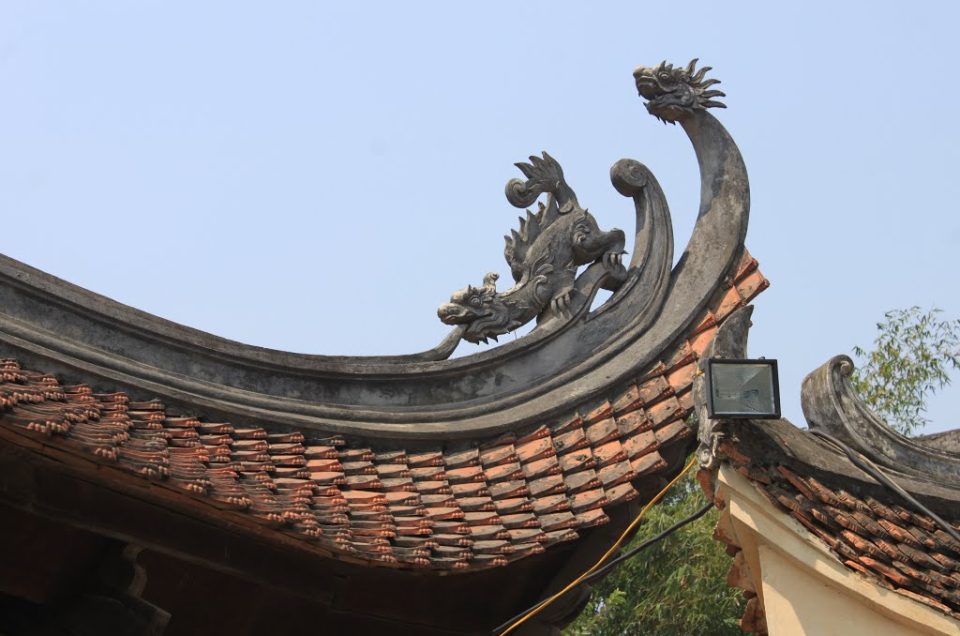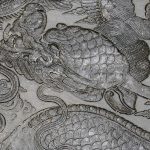Flowing past ancient sites

The Red River begins to flow into the outskirts of Hanoi from Trung Hà Confluence, where the serpentine Da River joins the stream. West of Thang Long Imperial City, this area was known as Son Tay Town, also called Doai Town, the heartland of Vietnamese people for millennia. The Red River runs through the regions of Ba Vi and Son Tay, meandering around Tan Vien Mount – home to a Vietnamese mountain spirit – to create an evocative shan shui landscape. Dotted along the river banks are communal temples that made the region famous, as evidenced by the saying: “Southern bridges, Northern pagodas, and Doai’s communal temples.” Communal temples designated national heritages such as Tay Dang, Chu Quyen, and Thuy Phieu were built 500 years ago. The Doai Communal Temple, where villagers used to gather, features prominent structural elements of stilt huts from the semi-highland regions, with giant ironwood pillars and a raised floor to avoid flooding and insects. Its unique beam system supports a vast gabled roof with characteristic eaves that arch upwards to resemble the bow of a sailing ship on the river. Set beneath a red cotton tree, the communal temple is a focal point beside the Mother River, with its somber brown hues offset by the lush greenery of the nearby dyke.

Downstream on opposite banks lie the regions of Phuc Tho and Me Linh, where the Trung Sisters rebelled against the Western Han Dynasty. The northern bank is part of Me Linh District, the home of the sisters, while the southern bank hosts the Hat Mon Ruins, where they took their lives after losing the war. The ancient temple is located on the Hat River, a confluence where the Day River meets the Red River. It is said that the sisters turned into two statues that floated down the Cai River to Dong Nhan Village, south of Dai La Region – the downtown area of modern-day Hanoi. The locals collected the statues and built a shrine by the riverside before building a larger temple on higher ground in Huong Vien Village. This is one of the most important landmarks in Hanoi. In addition, the central southern district of Hanoi, located directly opposite the Red River, is called the Hai Ba Trung District.

The central districts of Hanoi began with Tu Liem, the Sino-Vietnamese name for the ancient locale Chem. Located on the shore of Chem and facing the river is the Temple of Ly Ong Trong, a legendary general born two thousand years ago. The communal temple of Chem is popular for its imposing and impressive architecture, with ancient brick walls and precious artifacts dating back to the Later Le Dynasty. Right next to the Chem communal temple lies the village of Dong Ngac, also known as Ke Ve, associated with local scholars who became powerful magistrates. Aside from the Ve communal temple, Dong Ngac Village also preserves many old traditional Vietnamese houses as well as Franco-Vietnamese villas.





